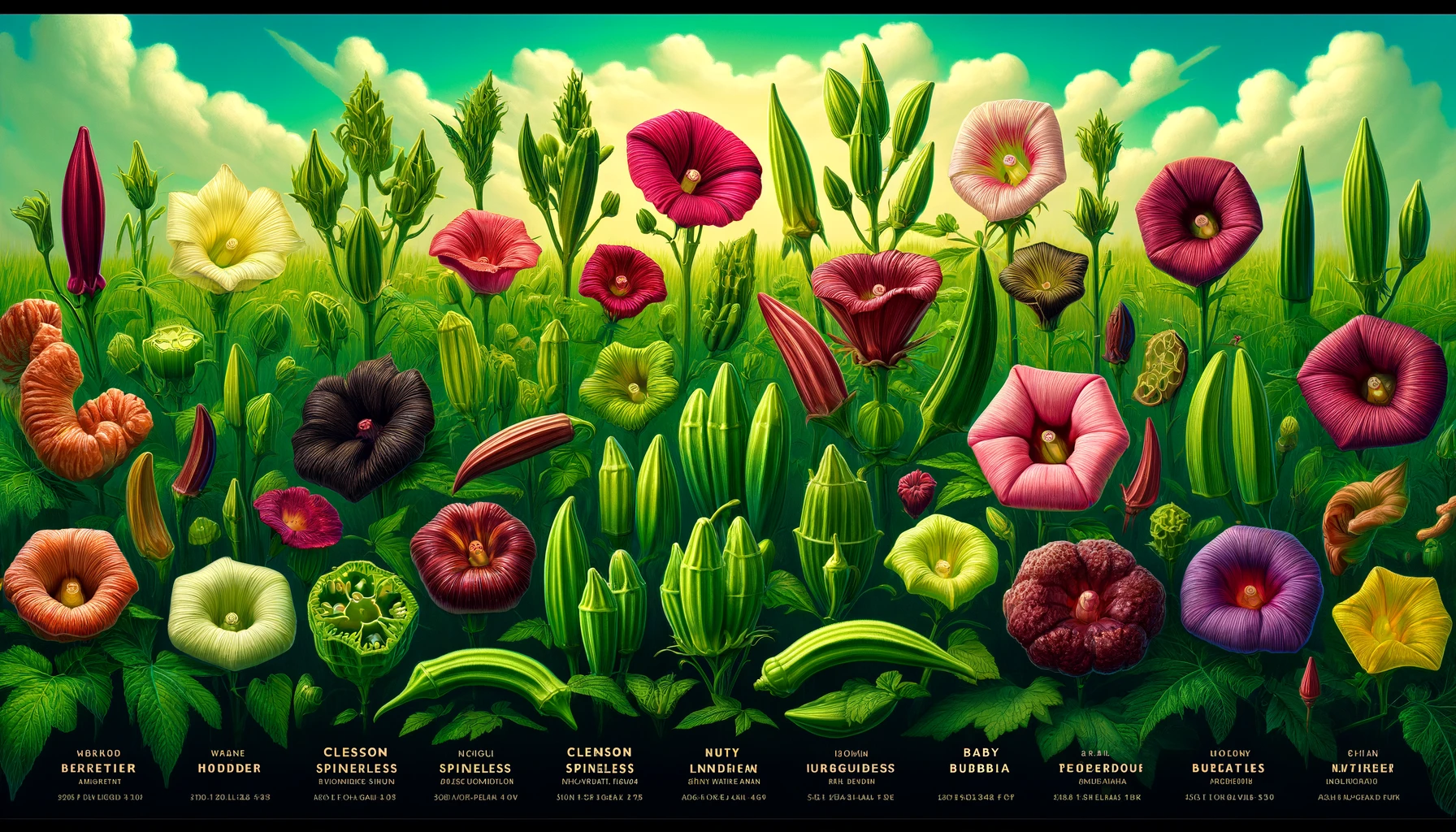Okra, also known as ladies’ fingers or gumbo, is a versatile vegetable cherished in many cuisines worldwide. This comprehensive guide explores different okra varieties based on their commonality, rarity, adaptability to weather, and uses, providing detailed descriptions to help you choose the best okra for your culinary and gardening needs.
Table of Contents
- Common Okra Varieties
- Rare Okra Varieties
- Exotic Okra Varieties
- All-Weather Okra Varieties
- Best Okra Varieties for Specific Uses
- Additional Okra Varieties
1. Common Okra Varieties
Clemson Spineless Okra
Clemson Spineless okra is the most widely grown variety in the United States, known for its smooth, spineless pods. It is a reliable producer and easy to grow.
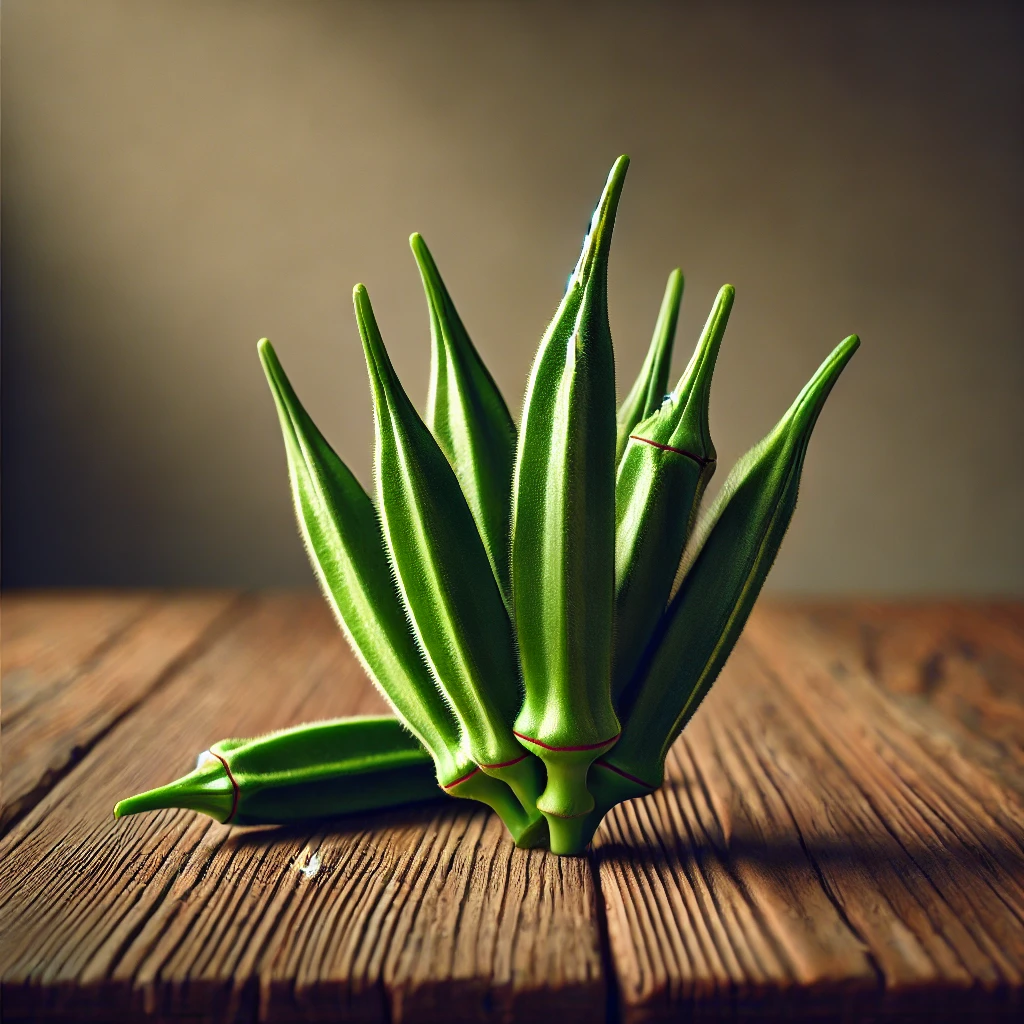
- Description: Smooth, spineless pods.
- Appearance: Medium to large green pods.
- Location: United States.
- Ideal Weather: Warm, sunny climates.
- Ideal Season: Summer.
- Ideal Temperature: 70-95°F (21-35°C).
- Uses: Stews, frying, pickling.
Emerald Okra
Emerald okra is appreciated for its dark green, tender pods and prolific yield. It is commonly used in various culinary dishes due to its tender texture.
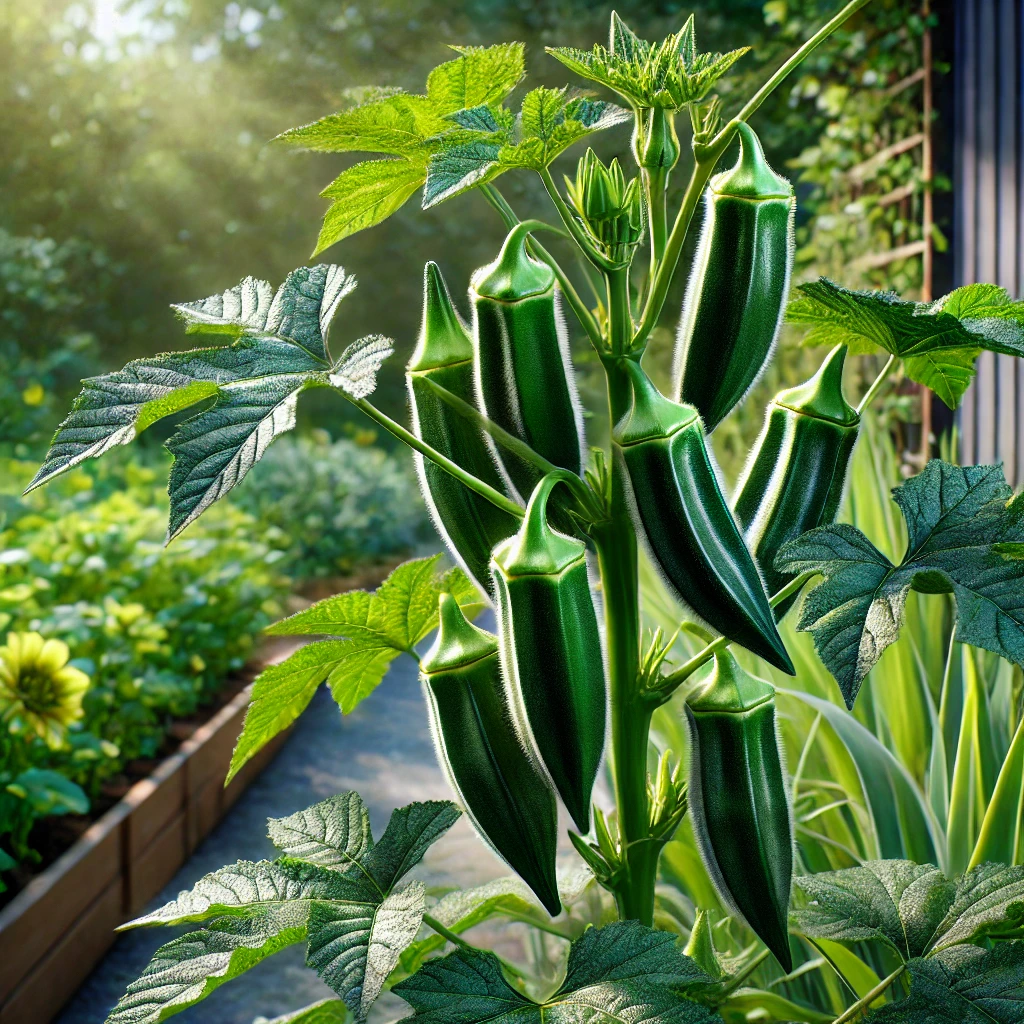
- Description: Tender, dark green pods.
- Appearance: Medium to large dark green pods.
- Location: United States.
- Ideal Weather: Warm, sunny climates.
- Ideal Season: Summer.
- Ideal Temperature: 70-95°F (21-35°C).
- Uses: Soups, stews, frying, pickling.
2. Rare Okra Varieties
Hill Country Red Okra
Hill Country Red okra is a rare heirloom variety known for its striking red pods and unique flavor. It is often grown for its ornamental value as well as its edible pods.
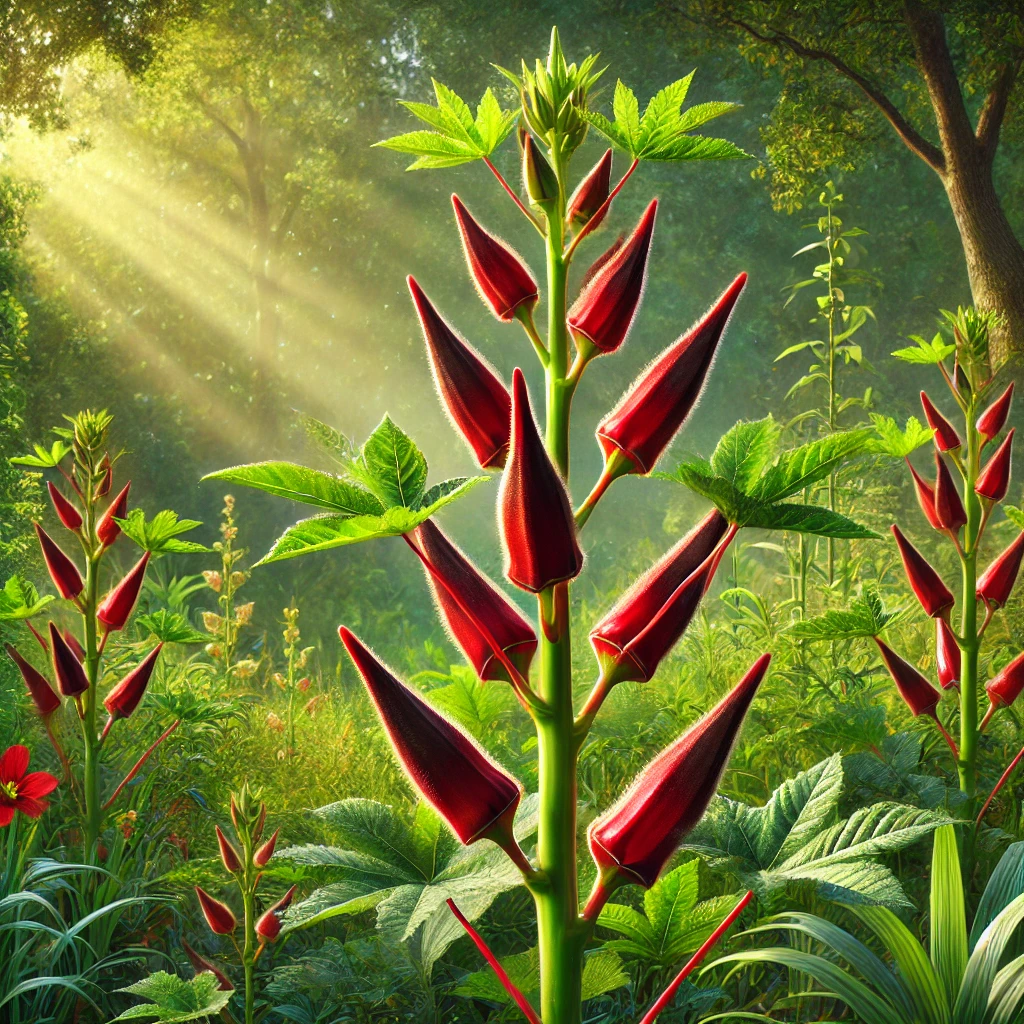
- Description: Unique flavor, ornamental value.
- Appearance: Red pods.
- Location: United States.
- Ideal Weather: Warm climates.
- Ideal Season: Summer.
- Ideal Temperature: 70-95°F (21-35°C).
- Uses: Culinary dishes, ornamental.
Jing Orange Okra
Jing Orange okra is a rare variety from China, recognized for its vibrant orange-red pods. It is prized for its eye-catching color and tender texture.
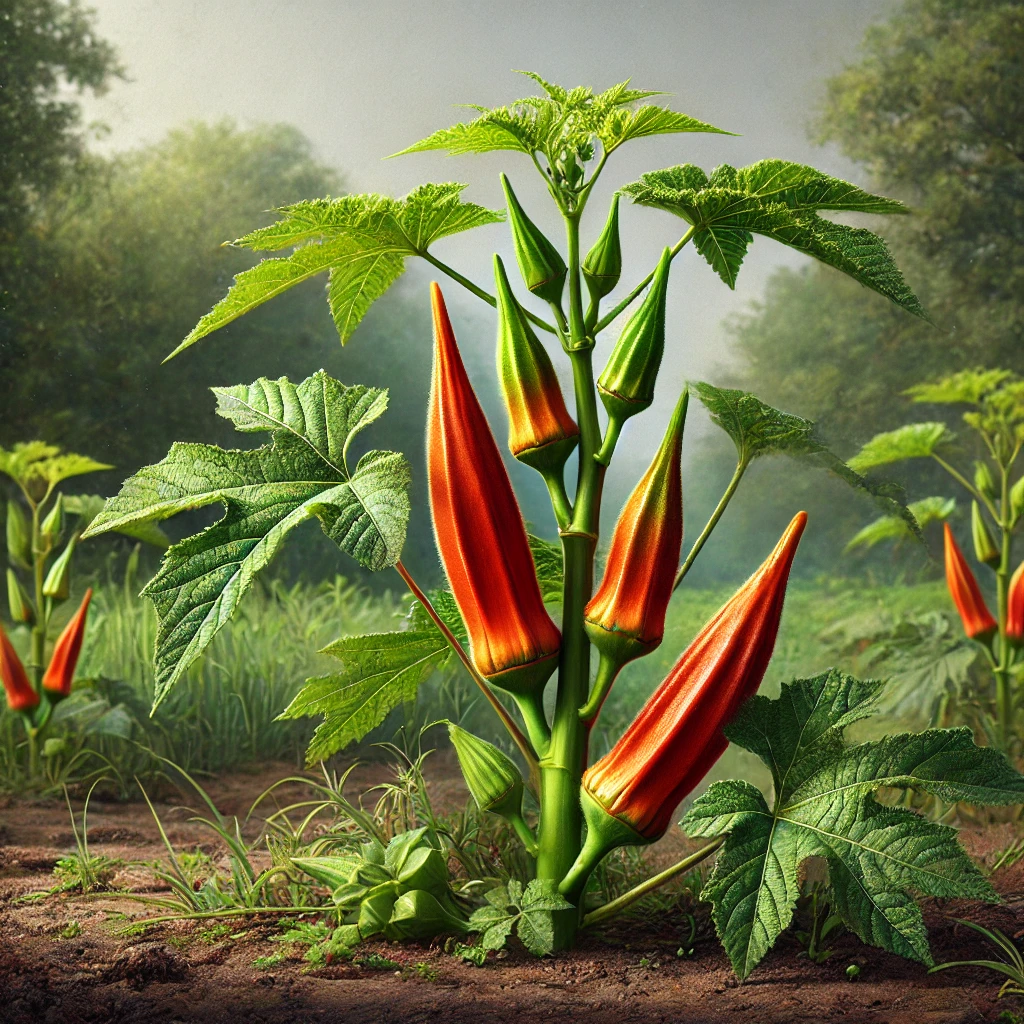
- Description: Vibrant color, tender texture.
- Appearance: Orange-red pods.
- Location: China.
- Ideal Weather: Warm climates.
- Ideal Season: Summer.
- Ideal Temperature: 70-95°F (21-35°C).
- Uses: Stews, frying, pickling.
3. Exotic Okra Varieties
Burmese Okra
Burmese okra is an exotic variety known for its extra-long, slender pods. It is popular in Asian cuisines and valued for its tender, flavorful pods.
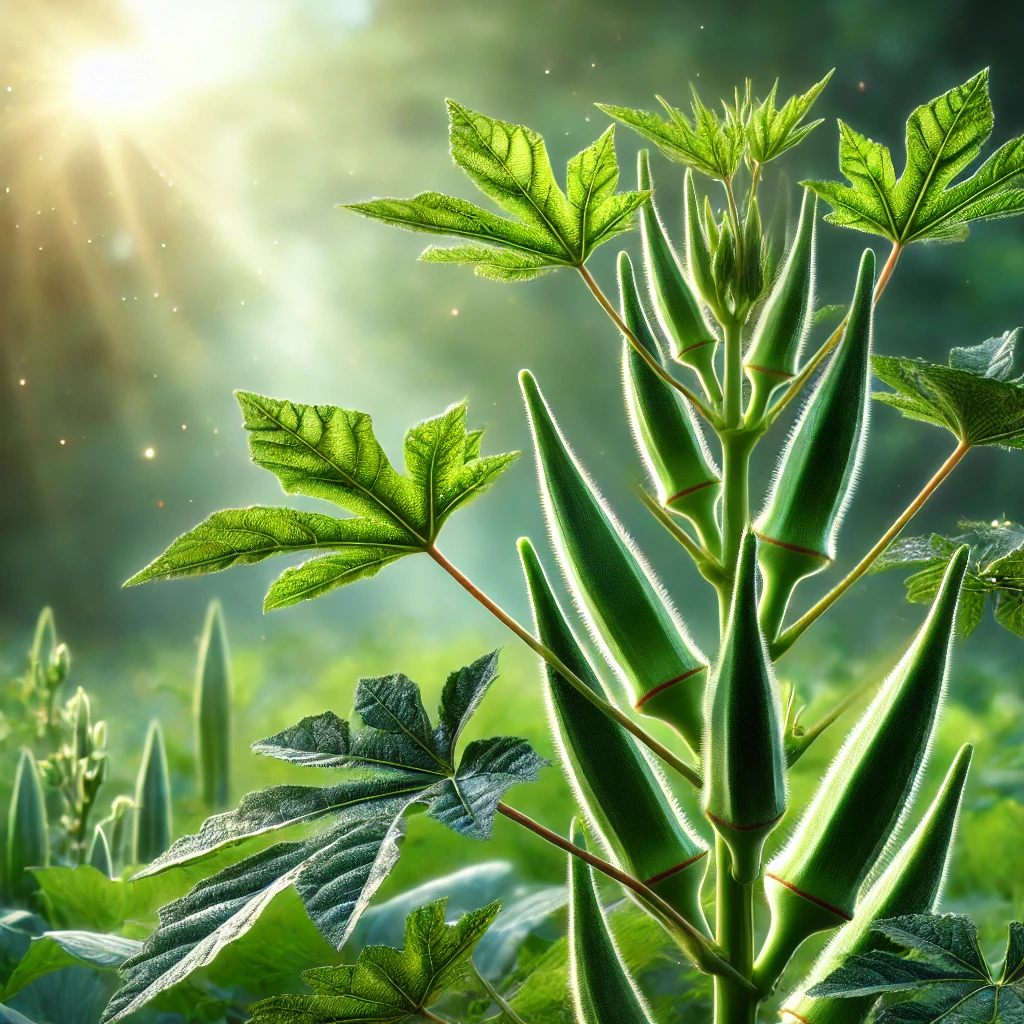
- Description: Extra-long, slender pods.
- Appearance: Long green pods.
- Location: Southeast Asia.
- Ideal Weather: Tropical and subtropical climates.
- Ideal Season: Summer.
- Ideal Temperature: 70-95°F (21-35°C).
- Uses: Stir-fries, soups, stews.
Baby Bubba Okra
Baby Bubba okra is an exotic dwarf variety ideal for small gardens and container planting. It produces full-sized pods on compact plants, making it perfect for limited spaces.
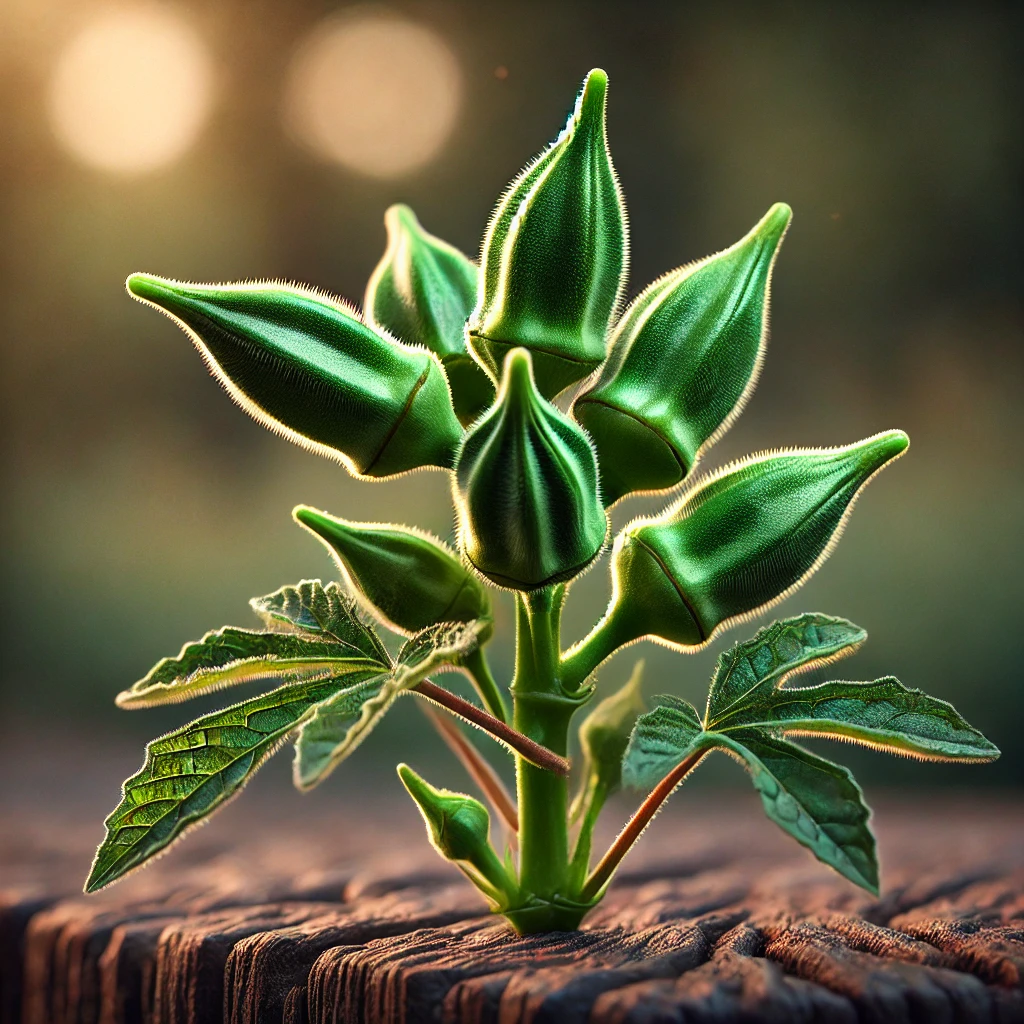
- Description: Dwarf variety, compact growth.
- Appearance: Medium green pods.
- Location: United States.
- Ideal Weather: Warm climates.
- Ideal Season: Summer.
- Ideal Temperature: 70-95°F (21-35°C).
- Uses: Small gardens, containers, culinary dishes.
4. All-Weather Okra Varieties
Perkins Long Pod Okra
Perkins Long Pod okra is known for its adaptability to various climates and long, slender pods. It is a prolific producer and can thrive in a wide range of conditions.
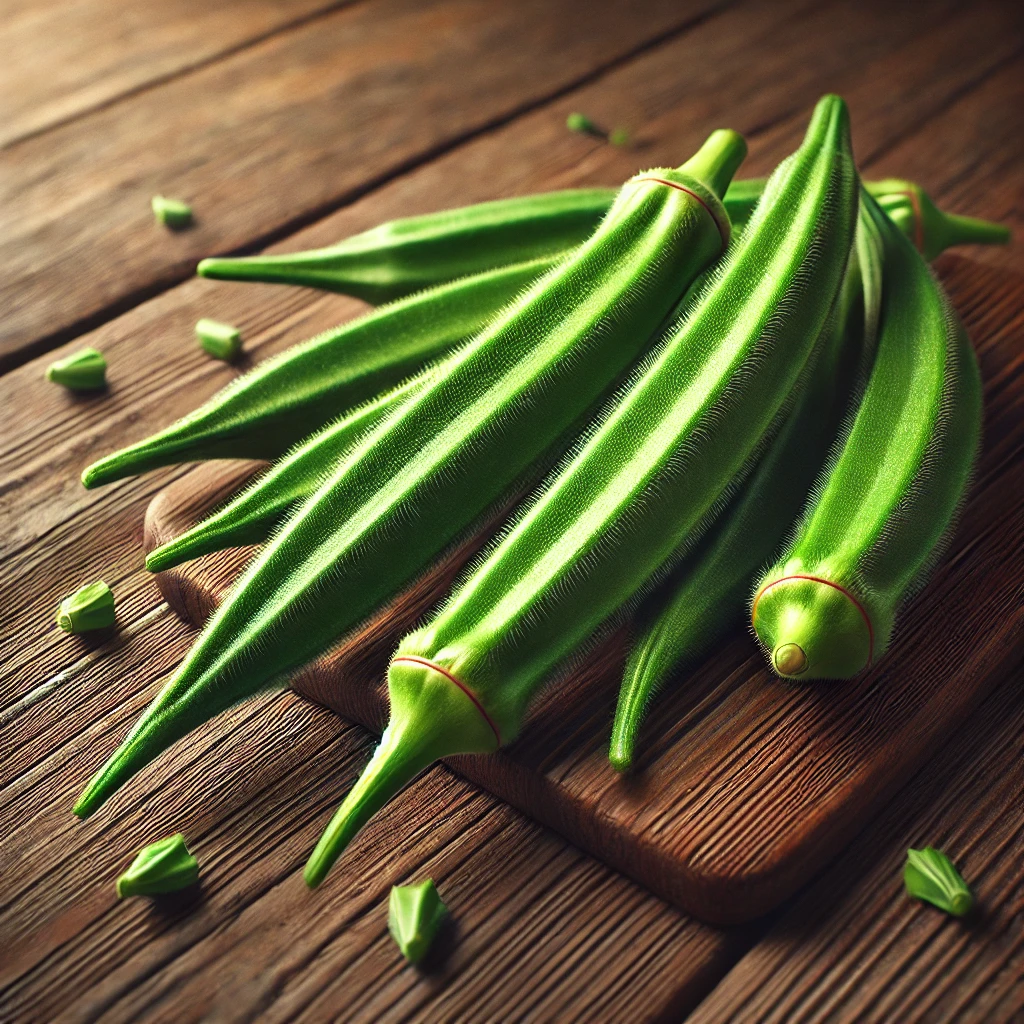
- Description: Long, slender pods, adaptable.
- Appearance: Long green pods.
- Location: United States.
- Ideal Weather: Varied climates.
- Ideal Season: Summer.
- Ideal Temperature: 70-95°F (21-35°C).
- Uses: Stews, frying, pickling.
Cajun Delight Okra
Cajun Delight okra is a versatile variety that performs well in different weather conditions. It is known for its tender pods and high yields.
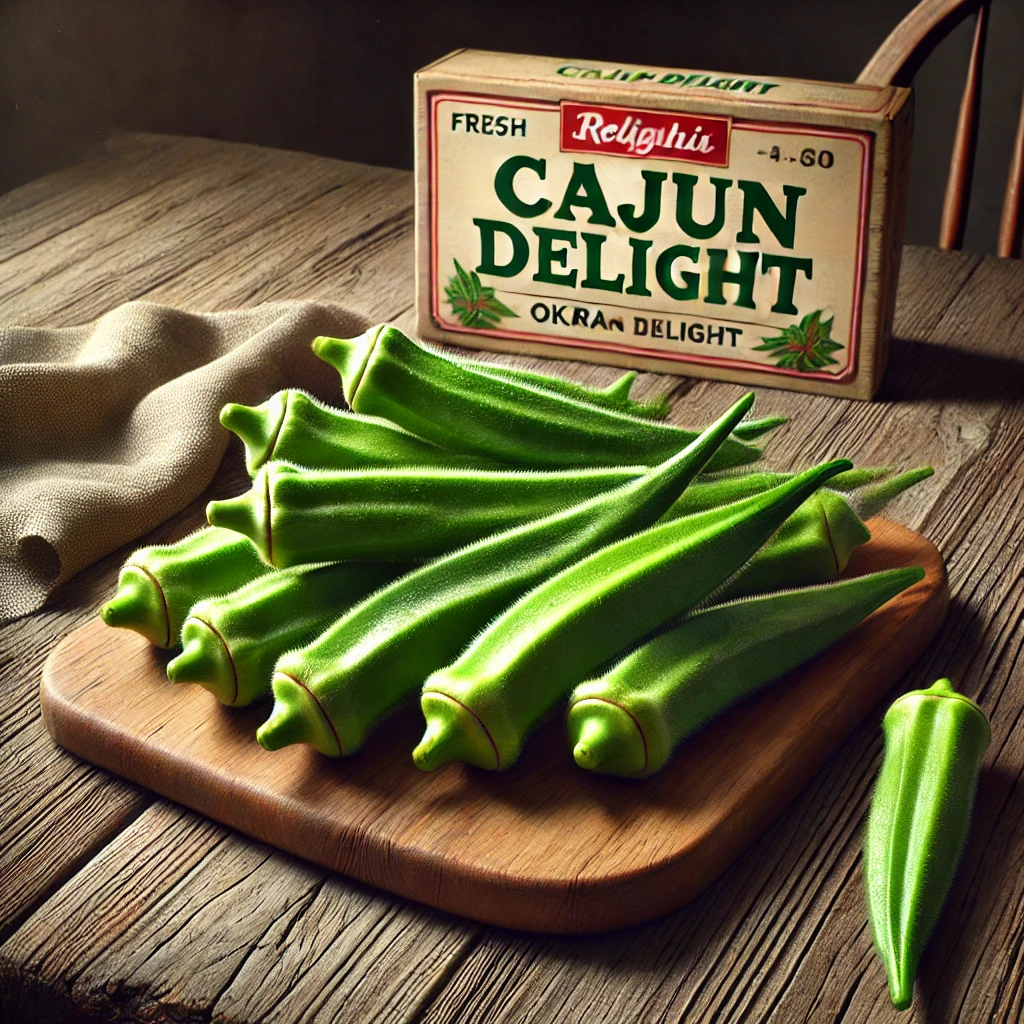
- Description: Tender pods, high yield.
- Appearance: Medium green pods.
- Location: United States.
- Ideal Weather: Varied climates.
- Ideal Season: Summer.
- Ideal Temperature: 70-95°F (21-35°C).
- Uses: Stews, frying, pickling.
5. Best Okra Varieties for Specific Uses
Cooking: Clemson Spineless Okra
Clemson Spineless is ideal for cooking due to its smooth, tender pods that remain firm when cooked. It is a favorite in kitchens for its versatility.
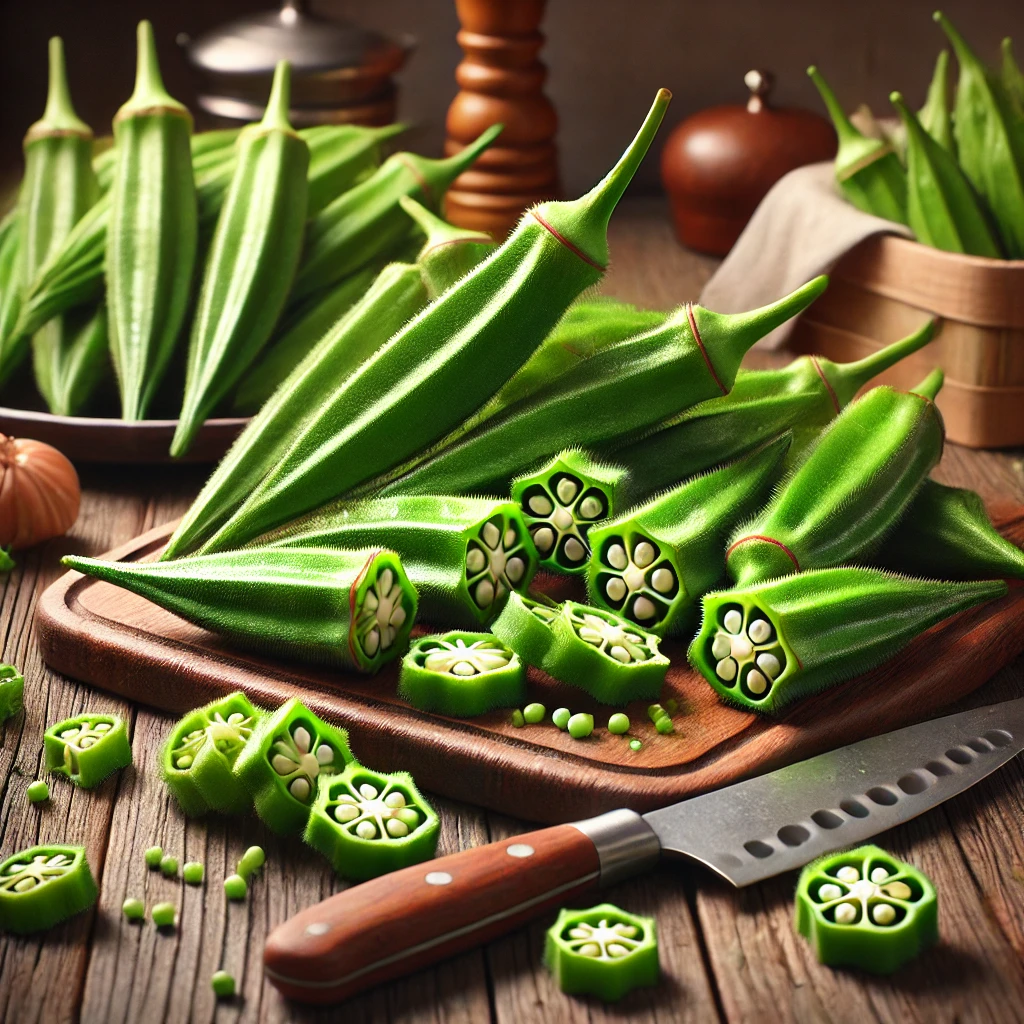
- Description: Smooth, tender pods.
- Appearance: Medium to large green pods.
- Location: United States.
- Ideal Weather: Warm, sunny climates.
- Ideal Season: Summer.
- Ideal Temperature: 70-95°F (21-35°C).
- Uses: Stews, frying, pickling.
Pickling: Burgundy Okra
Burgundy okra is perfect for pickling due to its vibrant red color and tender texture. It adds visual appeal and flavor to pickled dishes.
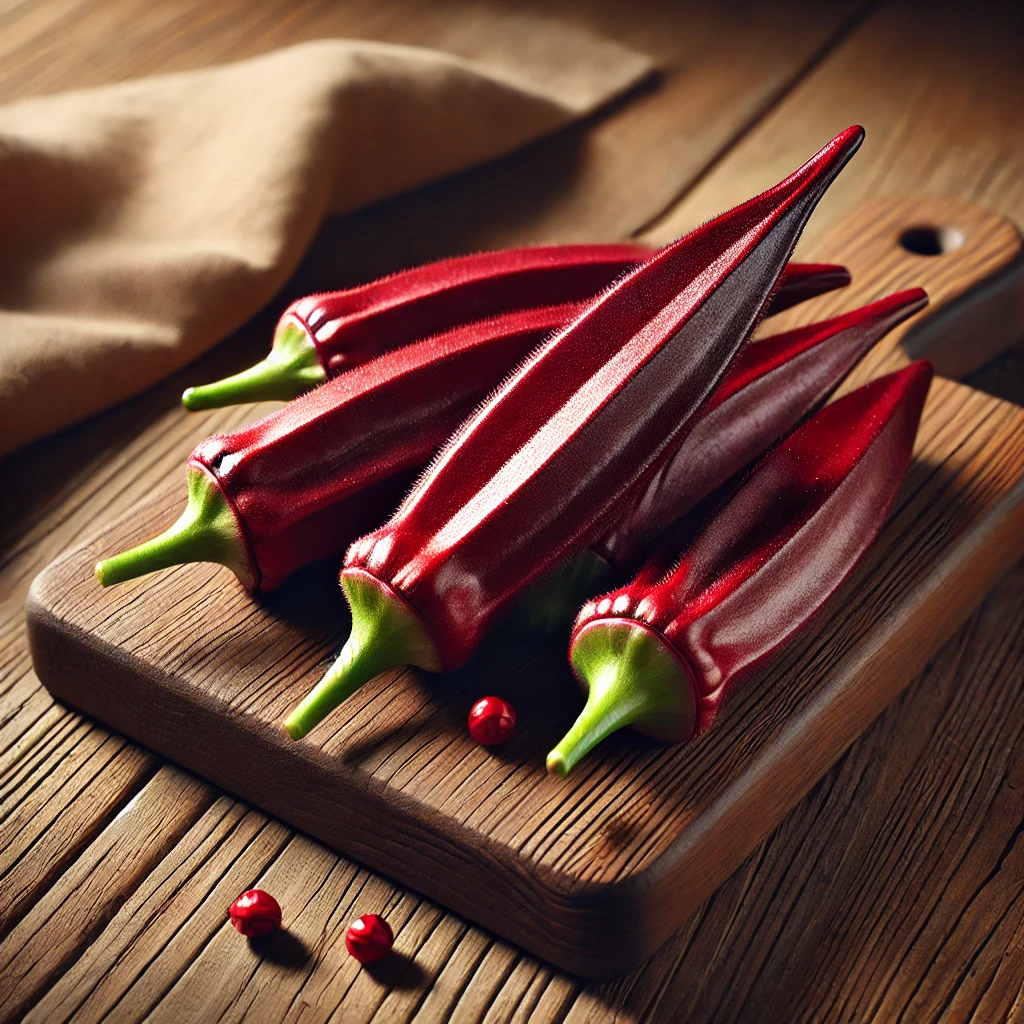
- Description: Tender texture, vibrant color.
- Appearance: Red pods.
- Location: United States.
- Ideal Weather: Warm climates.
- Ideal Season: Summer.
- Ideal Temperature: 70-95°F (21-35°C).
- Uses: Pickling, ornamental, culinary.
6. Additional Okra Varieties
Annie Oakley II Okra
Annie Oakley II okra is a hybrid variety known for its high yields and uniform pods. It is a reliable producer, making it a popular choice for gardeners.
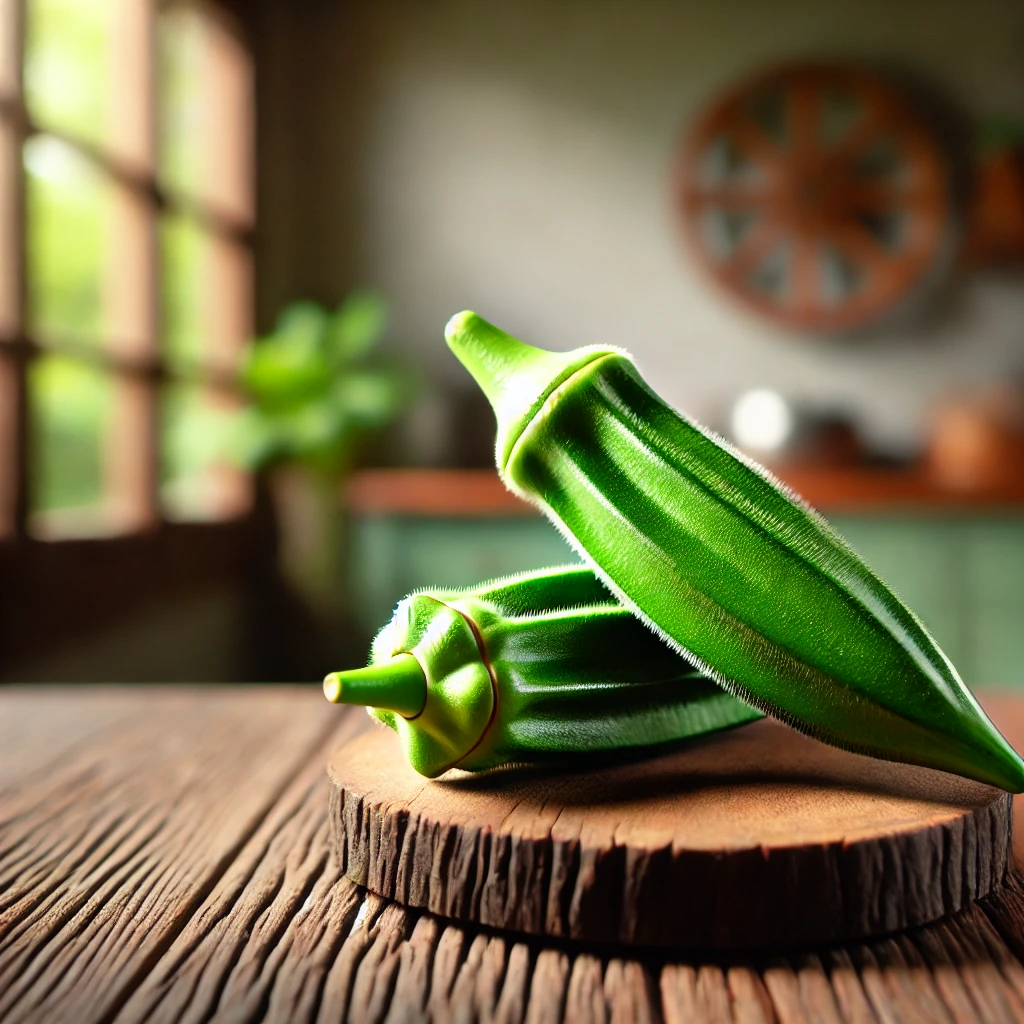
- Description: High yields, uniform pods.
- Appearance: Medium green pods.
- Location: United States.
- Ideal Weather: Warm climates.
- Ideal Season: Summer.
- Ideal Temperature: 70-95°F (21-35°C).
- Uses: Culinary dishes, pickling.
Star of David Okra
Star of David okra is an heirloom variety known for its unique star-shaped cross-section and large, tender pods. It is often used in Mediterranean and Middle Eastern cuisines.
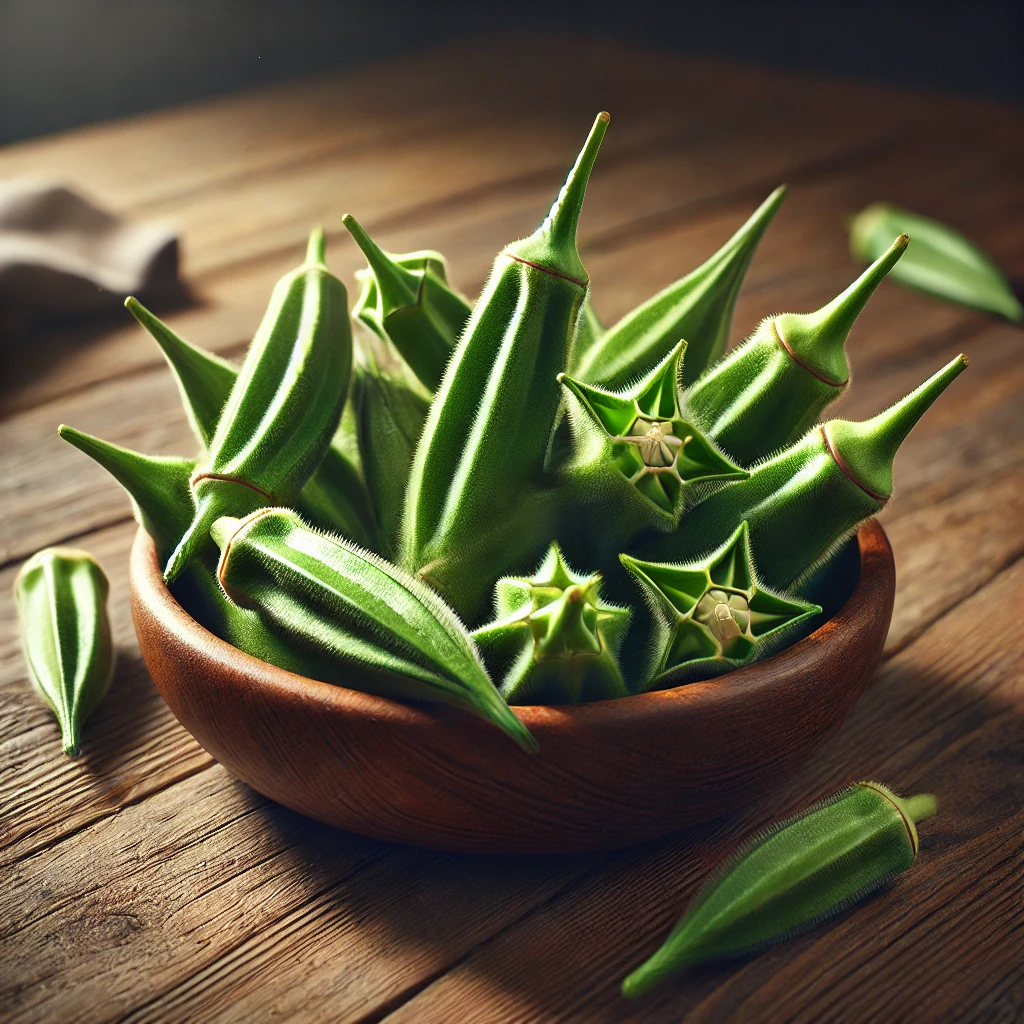
- Description: Unique star-shaped pods.
- Appearance: Large green pods.
- Location: Israel, Mediterranean regions.
- Ideal Weather: Warm climates.
- Ideal Season: Summer.
- Ideal Temperature: 70-95°F (21-35°C).
- Uses: Culinary dishes, stews, frying.
Conclusion
Okra comes in a diverse range of varieties, each with unique characteristics that make them suitable for different culinary and gardening applications. By understanding these varieties, you can select the perfect okra for any dish, whether you are looking for common, rare, exotic, all-weather, or use-specific options.
